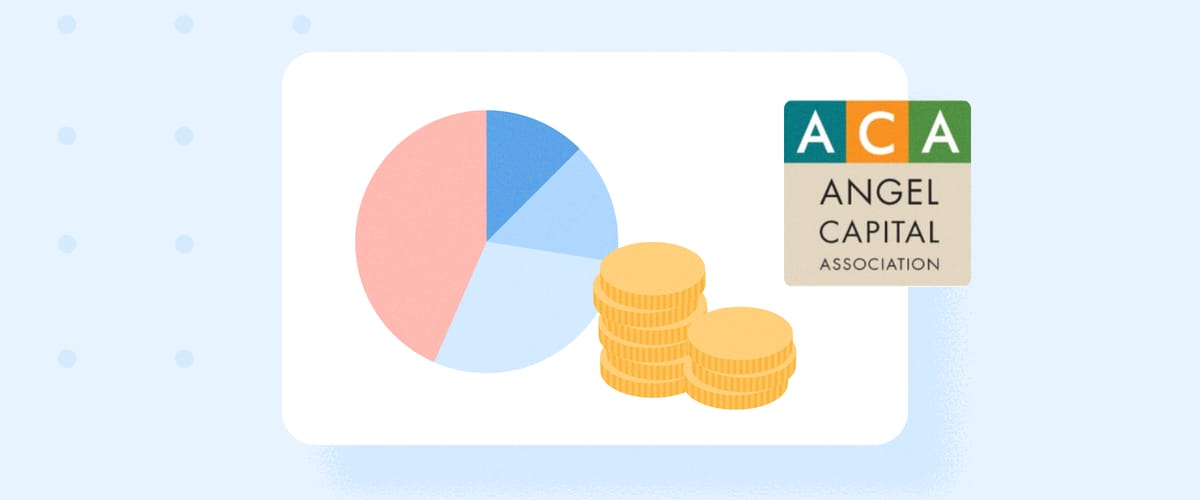There is one major and very specific dilemma investor group managers face in their operations - should they focus on deal flow quality or quantity? Surely on quality, one might think - but we have seen that there is a lot of hidden complexity in choosing the approach, something that is not obvious at first glance. Let’s discuss the two opposing camps that form when answering the question, what are the positives and negatives of both, and what can be done to overcome some of their problems.
“Superstars only, please”
It is clear that the more specific the business angel network (BAN) is about whom they want to see in their funnel, the more focused their search is and the more relevant startups they get in the end. Specialised groups find it easier to send their message across to the startups and also enjoy the benefit of being an expert in the specific vertical which is a great marketing message and attracts more startups from the field.
On the flip side, the higher the bar, the fewer get through the initial filter. This may result in too few deals being presented to members or even lacking the deal flow altogether, depending on how much the group is limited to their specific geography. For example, an AI-based chatbot vertical may only produce five startups a year in the whole Nordics, but globally it could be ten times more and finding 2-3 good investment cases from a pool of 50 is much more realistic.
Focused groups usually have a rather specific and well-defined requirements list for the company and this brings along a lot of work for the manager to shift through the deal flow inbox and make sure startups meet the criteria.
Once the companies have been selected, the manager faces another barrier - focused groups, especially if geographically limited, are often small. The fewer members, the more likely the group is to fail to fill the round on their own.
“The more the merrier”
Angels often join BANs not only for the deal flow but for the social element - belonging, information and knowledge exchange, experience sharing, networking and creating connections with other investors.
Similarly, non-profit BANs may find that deal flow is not their primary purpose and value-offer to the members. They prefer to focus on growing the early-stage ecosystem in general by educating novice angels on how to invest. This means that non-profit BANs don’t always receive a very high-quality deal flow and are more of a training academy for the founders and angels before they move to bigger rounds and a more professional investing - fundraising is an art that requires learning. In this real-life school, a strong knowledge base is created for the young angels and founders alike who can proceed to the next level of investing after graduation.
The good news is – these kinds of BANs have a high member count. The bad news – they often have a varied deal flow where ideas are in different stages and of non-uniform quality. Raising the bar is not an option if BAN wants to continue being open and inclusive, but members often find it difficult to spot relevant deals in the busy funnel. BAN managers don’t always know what each member looks for specifically and therefore are unable to assist by connecting the right deal with the right member. This again results in rounds not being closed and, eventually, founders may prefer to turn to venture capital (VC) where they can raise faster and more efficiently.
The balancing act
In summary, BANs can be stuck in a vicious circle that goes something along these lines:
Route A: focus → higher bar → better deals → not enough deals and investors → rounds not closed
Route B: open up → lower bar → too many deals → members cannot find right deals → rounds not closed → founders go elsewhere → fewer deals
Looks like no matter what, the network would end up with an insufficient number of good deals or with difficulties closing the rounds. The manager could try to find the balance between quality and quantity, but this is a lot of trial and error which may have a negative impact on the positioning and image of the network. Therefore, we propose an alternative solution - a network of networks.
Sharing is caring!
An overused catchphrase, we know… But we believe this really does make all the difference. Sharing combines the positives from both, the quality-first and the all-inclusive routes. It means relevant deals meet the relevant investors utilising their industry experience and filling up rounds. There are some prerequisites to make this work, though.
Step 1: create virtual investor groups
A lot of unused potential is behind the long member list of national BANs. Creating sub-groups for different purposes based on, for example, ticket size, geography, vertical, specific technology, or company characteristic (female founders, social entrepreneurship etc) would allow the investors to find relevant deals faster. The tricky part is to find enough interested members to create synergy within the sub-group – if this is the case, creating a sub-group across different BANs might be a solution.
Step 2: utilise the expertise
A specialised BAN that combines investors with expertise and experience in the field is more attractive to founders than big money in VC or fund. Specialised BAN also knows the industry inside-out and therefore is able to pick the strongest startups and validate their ideas. This means they serve as a perfect entry point for the founders and as a connection to other angels.
National BANs can use one of their assets, experienced deal leads, for the same purpose. A deal lead who has experience in some specific vertical and specialises in it has sufficient knowledge and experience to filter out the best startups and share these with their network of potential co-investors.
The expertise and industry network are essential for sharing to happen because the best way to find other groups to cooperate and share deals with is to know what others are doing, what they focus on, and what is their background.
Step 3: power up partnerships
When a sub-group chooses a deal but is not able to fill the round, they have several options.
They can start with sharing and promoting the deal in their national BAN. There is a lot that speaks in favour of this option – a bigger audience to find more interested investors from one side and deal validation by an industry expert from the other side giving confidence to investors who lack specific knowledge.
As an alternative, the deal lead can also choose to keep the industry focus and approach their wider network which could include not only angels and super angels but also relevant VCs or even institutional investors in the sector.
The third option is for BANs to step up their game and aggregate the process which allows small ticket owners to play along. The main goal is to avoid the administrative burden of having too many investors in the company’s cap table - a special purpose vehicle, side-car fund, micro fund, or collaboration with an external funding platform works well for this purpose. Equity crowdfunding may be a very reasonable choice depending on the focus of the startup - consumer products will have a lot of marketing value and visibility from the fundraising campaign and hundreds of micro-angels are great ambassadors for the product.
Step 4: wait for the magic to happen
When founders realise where to apply for with their specifics, the deal flow starts to regenerate itself as the reputation of the BAN builds itself. For founders it’s not just the money they receive - what comes along is just as important. If the risk of not completing the round is mitigated then founders always prefer angels with sector experience to VCs that focus purely on the multiples and returns. At some point, angel groups start to outperform VCs in the founders’ eyes. We welcome this perspective as we believe BANs should be the first choice for founders in seed rounds.
Bonus tips
Non-profit and profit-oriented BANs have a very different purpose and the former is not strictly focused on producing a maximum financial return. As a BAN, it is important to clearly define and communicate who you are and for what and whom you exist.
It is also important for founders to understand what they can expect from your BAN - what steps they need to go through, when, and how. Transparency is the key, both for founders as well as your members.
Once the process is defined and communicated, you must also ensure you are able to deliver as promised. You need a good tool to be able to manage the processes and communication professionally and to avoid deals slipping through the cracks. There is nothing worse for founders than their application ending up in a big black hole that gives nothing back. Keeping your funnel under control is especially important when the deal flow is increasing and there are more applications coming in - the tool you use must be able to scale to the growing deal flow.
Make sure it’s easy for lead angels to share their deals within the group. Yes, there is a risk that super angels in the group who can invest the whole early-stage round will contact the company directly and BAN involvement becomes redundant. This can be a positive thing, though - the founder raises the funds they need in order to grow, and as a result of a positive experience, they recommend the BAN to other founders. Super angels are usually extremely difficult to get hold of for the founders and when the rumour spreads, it adds an appeal to the BAN. Super angels often return the favour by sharing some of their deals with the group and are overall very useful to fortify BANs round closing and follow-up investing ability.
Curious to learn more about angel group operations?
Unlock the secrets to running a successful investor group with our free in-depth guidebook “Best Practices of Angel Investing”
Read now






